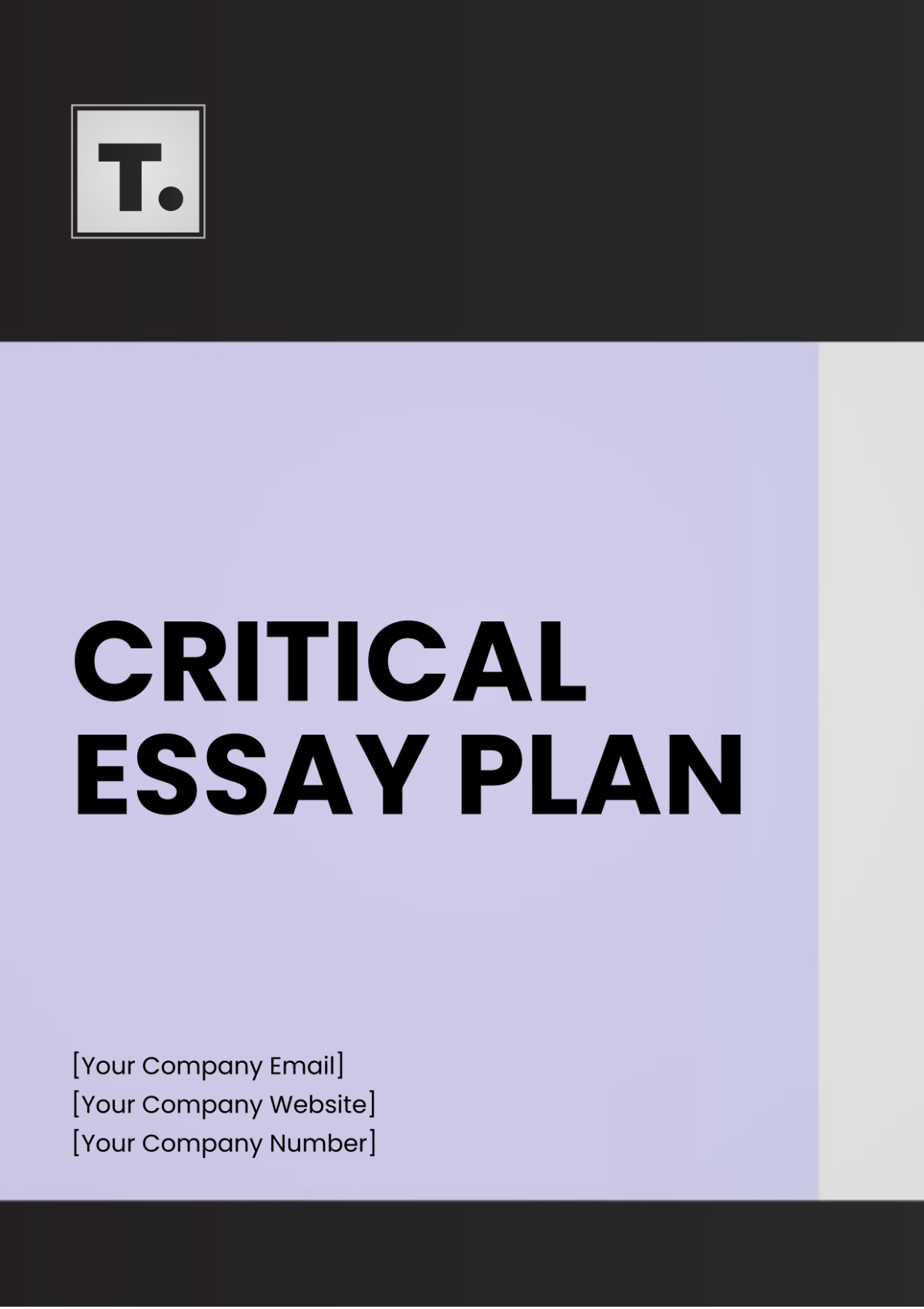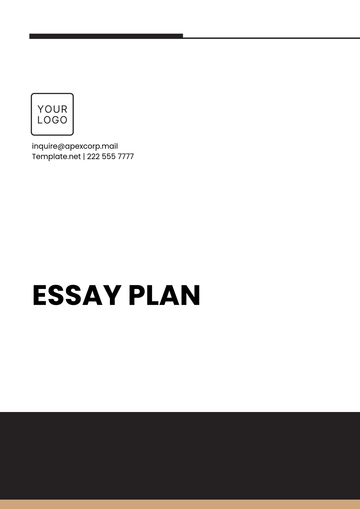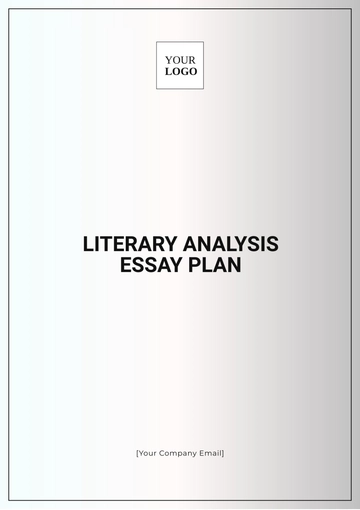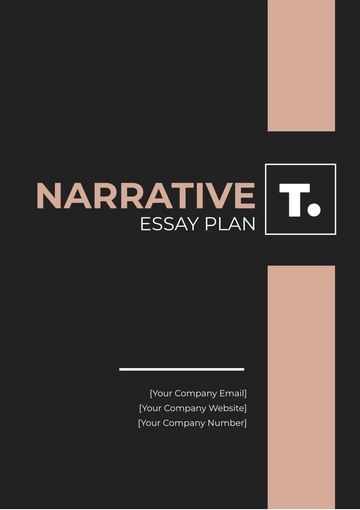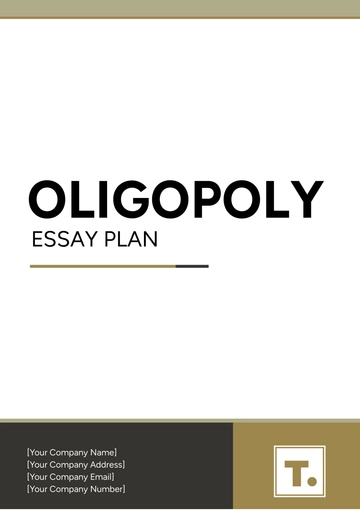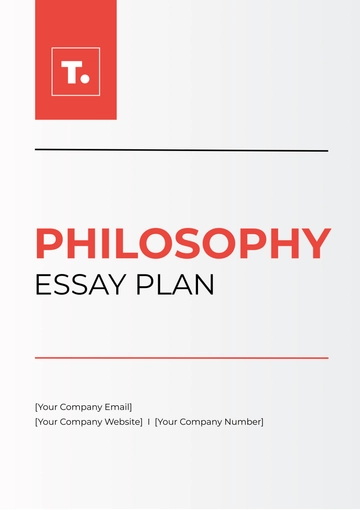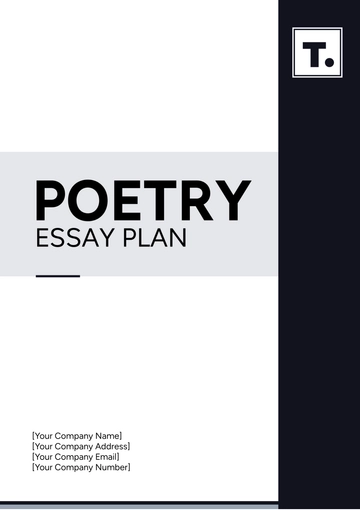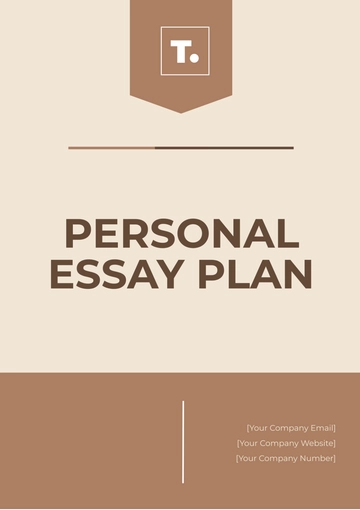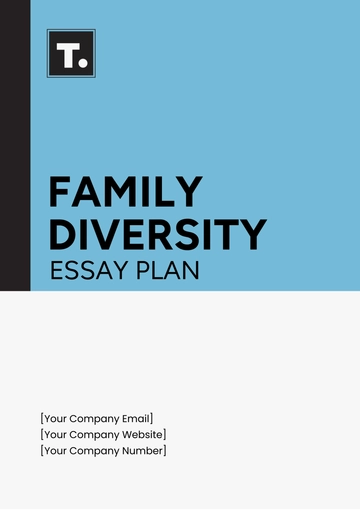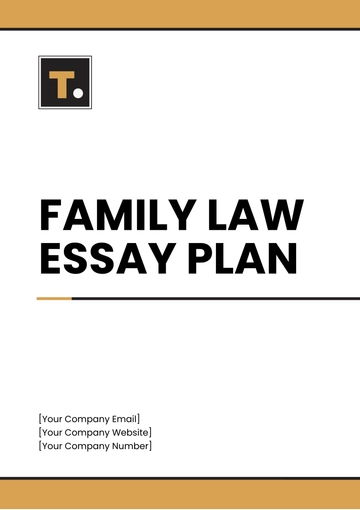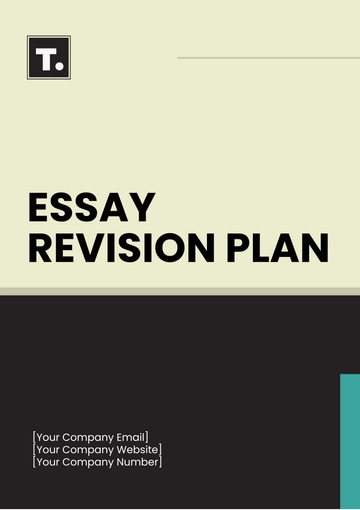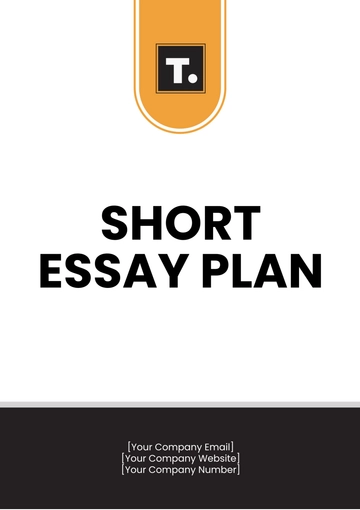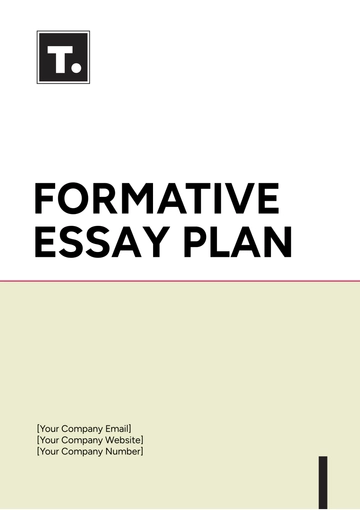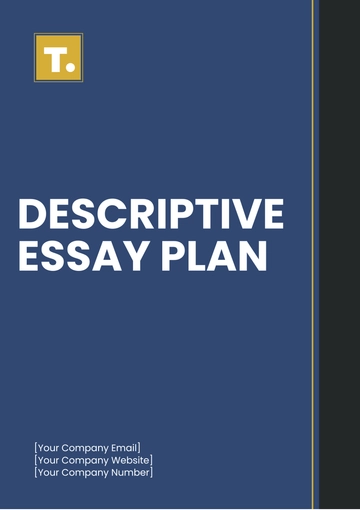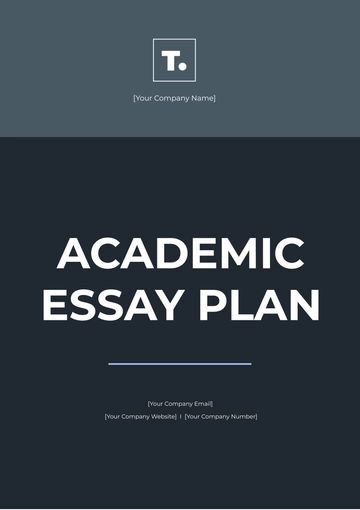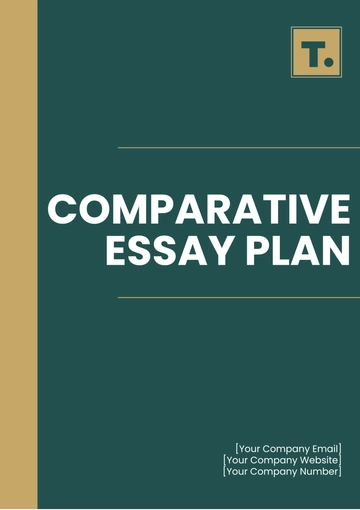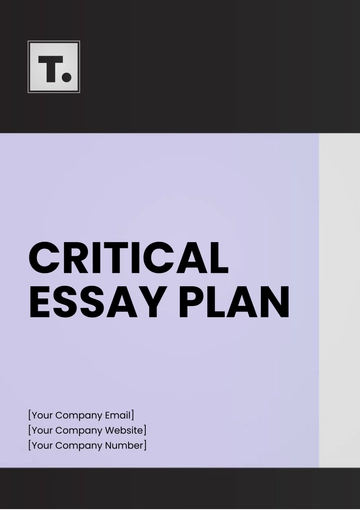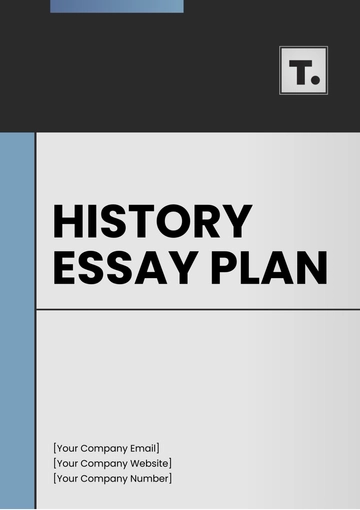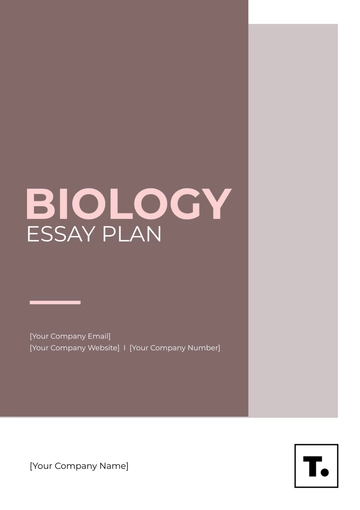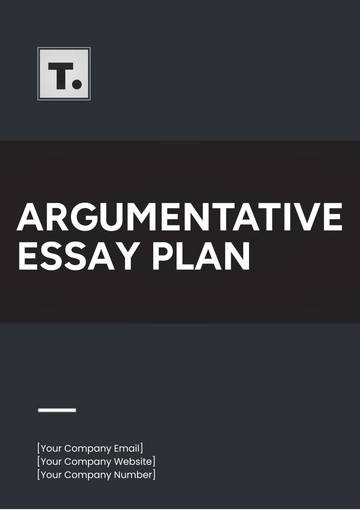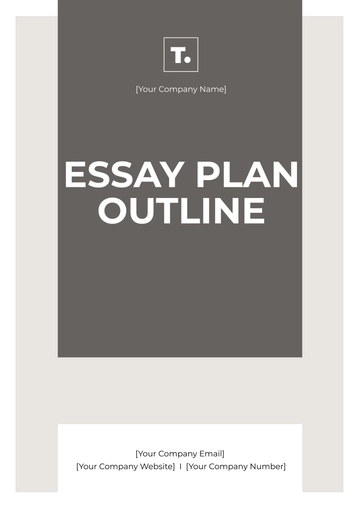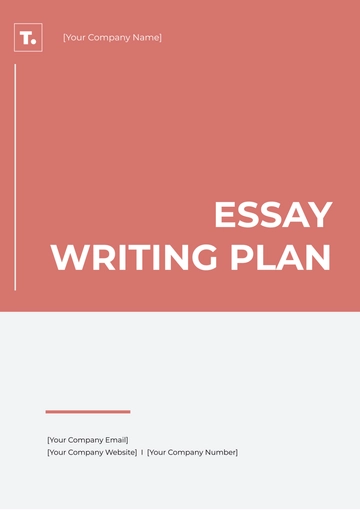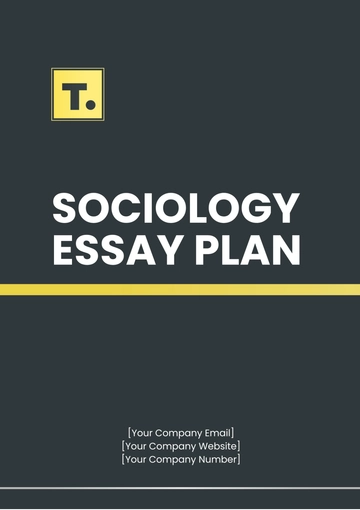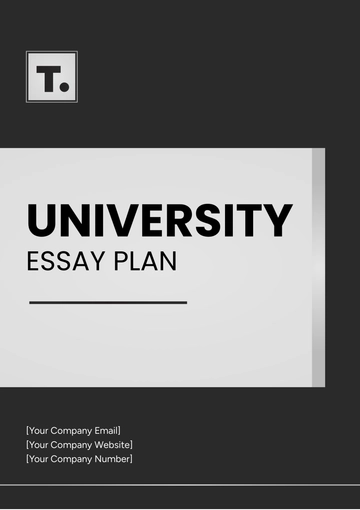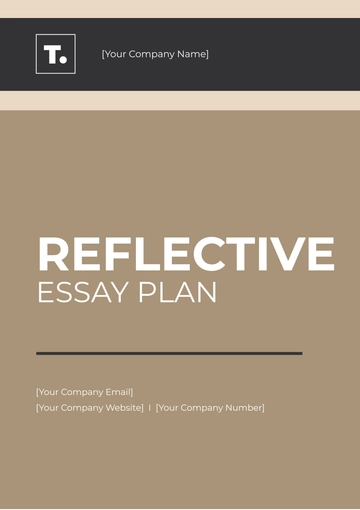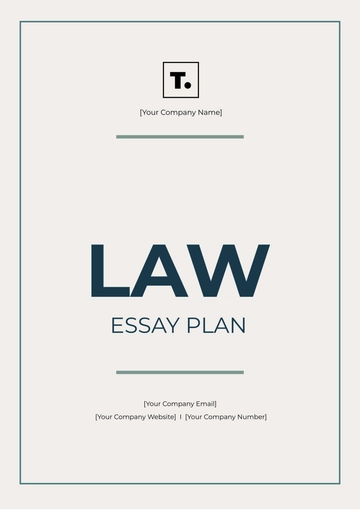Critical Essay Plan
Prepared by: [YOUR NAME]
1. Introduction
Essay Topic: [ESSAY TOPIC]
Thesis Statement: [THESIS STATEMENT]
Purpose: To critically analyze [PRIMARY FIELD] in the context of [ESSAY TOPIC].
Audience: [TARGET AUDIENCE]
Scope: This essay will explore [MAIN POINTS] to provide a comprehensive understanding of [ESSAY TOPIC].
2. Background Information
Overview of [PRIMARY FIELD]: Briefly introduce [PRIMARY FIELD] and its significance in [RELEVANT CONTEXT].
Historical Context: Explore the historical evolution of [PRIMARY FIELD] and its impact on [RELEVANT ASPECTS].
Key Concepts: Define essential terms and concepts related to [PRIMARY FIELD] that will be discussed in the essay.
3. Critical Analysis
Literature Review: Review existing scholarly works, studies, and theories about [PRIMARY FIELD] and its connection to [ESSAY TOPIC].
Critical Perspectives: Present various viewpoints and arguments from scholars regarding [PRIMARY FIELD] to provide a nuanced analysis.
Case Studies: Incorporate real-life examples or case studies to illustrate key points and support arguments.
Comparison and Contrast: Analyze similarities and differences between [PRIMARY FIELD] and related concepts to deepen understanding.
4. Methodology
Research Methods: Outline the research methods employed to gather data and sources for the essay.
Data Collection: Describe how information, data, and evidence were collected and evaluated for relevance and reliability.
Analytical Approach: Explain the analytical framework used to interpret findings and draw conclusions.
5. Argument Development
Main Arguments: Present the main arguments or claims supported by evidence and reasoning.
Counterarguments: Anticipate potential objections or counterarguments and address them with supporting evidence.
Logical Flow: Ensure a logical progression of ideas and arguments to maintain coherence and clarity.
6. Conclusion
Summary of Findings: Recapitulate the key findings and insights derived from the critical analysis.
Implications: Discuss the broader implications of the essay's findings for [PRIMARY FIELD] and its stakeholders.
Recommendations: Offer recommendations for future research or actions based on the conclusions drawn.
7. References
Citations: Provide a comprehensive list of sources cited throughout the essay in the appropriate citation style ([E.G., APA, MLA]).
Bibliography: Include additional readings and resources for further exploration of the topic.
8. Appendices (if applicable)
Additional Data: Include supplementary data, charts, graphs, or tables referenced in the essay.
Interview Transcripts: Attach transcripts of interviews conducted as part of the research process.
Plan Templates @ Template.net
